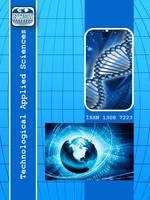HASSAS DÖKÜM YÖNTEMİ İLE ÜRETİLEN ALAŞIMLARIN MİKROYAPI VE SERTLİK ÖZELLİKLERİNİN ARAŞTIRILMASI
Mikroyapı, Hassas Döküm, Sertlik, Alaşım, Metal
THE INVESTIGATION OF MICROSTRUCTURE AND HARDNESS PROPERTIES OF ALLOYS PRODUCED BY INVESTMENT CASTING METHOD
Investment Casting, Microstructure, Hardness, Alloy, Metal,
___
- [1] Beeley, P., (2001). Foundry Technology, Second Edition, Butter worth Heinemann, Oxford.
- [2] Clegg, A.J., (1991). Precision Casting Processes, Pergamon Pres, Oxford. [3] Aran, A., (2007). Döküm Teknolojisi-İmal Usulleri, İTÜ-Makina Fakültesi.
- [4] Akman, E., Demir, A., Canel, E., and Sınmazçelik, T., (2008). Laser Welding of Ti6Al4V Titanium Alloys, Journal of Materials Processing Technology., 209(8), 3705-3713.
- [5] Ding, R., Gou, Z.X., and Wilson, A., (2002). Microstructual Evolution of a Ti6Al4V Alloy During Thermochemnical Processing, J.Materials Science and Enginering A, 327, 233-245.
- [6] Ion, J.C., (2005). Laser Processing of Engineering Materials: Principles, Procedure and Industrial Application, Elsevier, Oxford.
- [7] E.W.Collings, (1984). The Physical Metallurgy of Titanium Alloys, American Society for Metals.
- [8] Ming-chen, H., (1999). Thermohydrogen Treatment of Titanium Alloys, Aerospace Materials and Technology, (1), 23-27.
- [9] Applications for Titanium Alloys, (2003). International Titanium Association.
- [10] Modgil, A., (2003). “Effect of High Speed Maching on Surfacee Topography of Titanium Alloy (Ti6Al4V). A Thesis Presented to the Graduate School of the University of Florida.
- [11] ASTM, (2000). Introduction to Stainless Steels, Materials Park, Ohio, USA.
- [12] Davis, J.R., (1994). Stainless Steels, ASM International, OHIO, USA.
- [13] Smith, W.F., (2000). Paslanmaz Çelikler, Mühendislik Alaşımlarının Yapı ve Özellikleri, Cilt: 1, Ankara, 169-214.
- [14] Tülbentçi, K. ve Kaluç, E., (1992). Geçmişten Günümüze Paslanmaz Çelikler, META, No 20, 47-52.
- [15] Park, J. ve Lakes, R.S., (2007). Biomaterials An Introduction (3. Baskı). New York: Springer Science Business Media.
- [16] Berberich, F., Matz, W., Richter, E., Schell, N., Kreißig, U., and Möller, W., (2000). Structural Mechanisms of the Mechanical Degradation of Ti6Al4V Alloys in Situ Study During Annealing. Surface and Coatings Technology, (128), 450-454.
- [17] Emre, E.H., Kaçar, R., Bülbül, A., and Manisalı, B., (2017). AISI 316L-AISI 2205 Farklı Paslanmaz Çelik Çiftinin Kaynak Kabiliyeti, Ömer Halisdemir Üniversitesi Mühendislik Bilimleri Dergisi, Cilt:6, Sayı:1, 244-256.
- [18] Cvijovic-Alagic, I., Mitrović, S., Cvijović, Z., Veljović, D., Babić, M., and Rakin, M., (2009). Influence of the Heat Treatment on the Tribological Characteristics of the Ti-Based Alloy for Biomedical Applications, Tribology in Industry, Vol:31, No:3, 17-22.
- [19] J. Busby, P. Maziasz, J. McDuffee, A. Rowcliffe, M. Santella, M. Sokolov, M., Teysseyre, S., and Was, G., (2008). Improved Cast Stainless Steels for ITER Shield Modules; Annual Report.
- Başlangıç: 2009
- Yayıncı: E-Journal of New World Sciences Academy
HARMONİK EKLEME YÖNTEMİ İLE FIRÇASIZ DC MOTORUN (BLDC) HIZ DENETİMİ
ÖZDEĞER TABANLI ALGILAMA YÖNTEMLERİNDE EŞİK DEĞERİNİN ALGILAMA PERFORMANSINA ETKİSİ
Cebrail ÇİFLİKLİ, Fatih Yavuz ILGIN
HASSAS DÖKÜM YÖNTEMİ İLE ÜRETİLEN ALAŞIMLARIN MİKROYAPI VE SERTLİK ÖZELLİKLERİNİN ARAŞTIRILMASI
